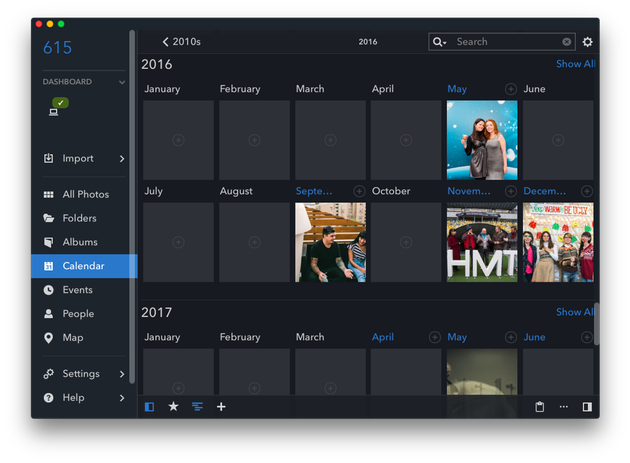

- BEST PHOTO ORGANIZING APP FOR MAC SOFTWARE
- BEST PHOTO ORGANIZING APP FOR MAC PROFESSIONAL
- BEST PHOTO ORGANIZING APP FOR MAC FREE
Note, however, that ACDSee Photo Studio Professional is available for Windows only, and the image editing tools are fairly basic. And the makers boast significant speed improvements in the latest (2021) version.

Flagship features include facial recognition and face detection, the ability to rename images in batches, the option to import established keyword lists, and customisable keyboard shortcuts.Ī total of 86 file formats are supported, from the obvious ones such as RAW, TIFF, JPG, and PSD, to more specialist types like the media container format HEIF, used by newer iPhones. You can import directly from your camera and other devices, and unlike Lightroom, you can access all the images on your computer, even if you haven’t imported them into the software.
BEST PHOTO ORGANIZING APP FOR MAC SOFTWARE
This digital asset management and photo editing software lets you organize your images by keyword, date, categories (such as People, Places, etc), location, colour labels, camera used, and ratings. That said, you also have the option of taking out a subscription, which includes 50GB of cloud storage.
BEST PHOTO ORGANIZING APP FOR MAC FREE
The two tools do work in very different ways, and when it comes to photo organization, there may be some workflows that you find easier and smoother in Adobe Bridge.ĭon’t want to take out a subscription and prefer to pay a one-off fee? Then we recommend ACDSee Photo Studio Professional 2021, which is available for a one-purchase that gets you a lifetime licence and one year of free updates. Meanwhile, if you already have a Creative Cloud subscription, it’s worth seeing what Adobe Bridge can do, even if you’re already using Lightroom. But if you have zero cash, it still has a lot to offer. As its clever integrations with Adobe software are its main selling point, that might seem pointless. One thing many people don't realize is that Adobe Bridge is free to use if you set up an Adobe ID: you don’t actually need a Creative Cloud subscription. So it also supports document formats such as doc, docx, odt and ott, as well as HTML, PDF, INDD (InDesign), and AI (Adobe Illustrator) files. It’s also worth remembering that Bridge is not just about images but all kinds of assets. Overall, Adobe Bridge is more limited than Lightroom in terms of both image editing and photo organization: it lacks facial recognition, for instance. The main things a photographer will use Adobe Bridge for in practice are adding and editing keywords, labels, ratings etc to your images, organizing them into collections, and finding specific images by using its powerful filters and advanced metadata search features. Both work on Windows and Mac, but only Lightroom works on mobile devices. So what’s the difference, and which should you use for your photo organization?Įssentially, Lightroom is more of a standalone, self-contained editing and organization suite for photos while Adobe Bridge is more of file finder and organizational tool that works across all Adobe apps and file types. And if you subscribe to the Creative Cloud, the Creative Cloud Photography Plan, or just Lightroom, you’ll have access to both of them. The interface looks very similar to Lightroom’s. There’s also Adobe Bridge, a creative asset manager that lets you preview, organize, edit and publish multiple creative assets quickly and easily.

Lightroom is not the only tool Adobe provides for organizing your photos. No mobile support -Less sophisticated than Lightroom One thing worth noting is that you have to import your images into Lightroom before you can start editing and managing them, which is not the case with some other photo organizer software.

Edits are non-destructive, which means you can go back to previous versions of your images at will, and some photographers find they can do all their editing in Lightroom without ever having to bother with Photoshop. When it comes to image editing, Lightroom isn’t quite as powerful as Photoshop, but it’s still pretty capable. Face recognition was one recent addition to Lightroom, and because this is subscription software, you get the latest updates automatically. Whatever you choose, you’ll find it easy to find and filter your photos thanks Adobe’s smart AI technology, Sensei, which is constantly being developed and improved. You can manage them as albums or stacks and further organize them using keywords, metadata, flags, and ratings. Secondly, Lightroom offers multiple ways to organize your photos.


 0 kommentar(er)
0 kommentar(er)
